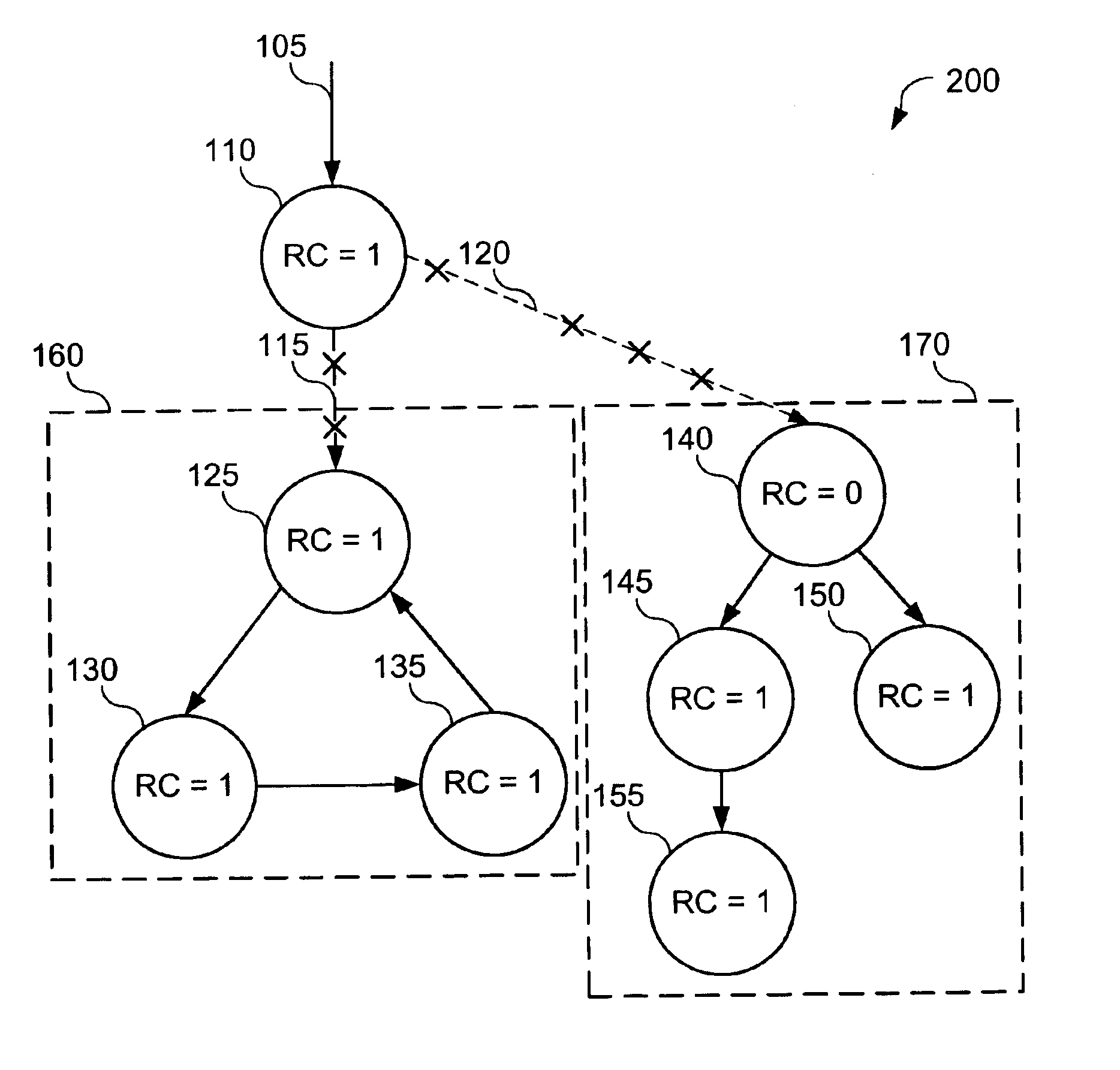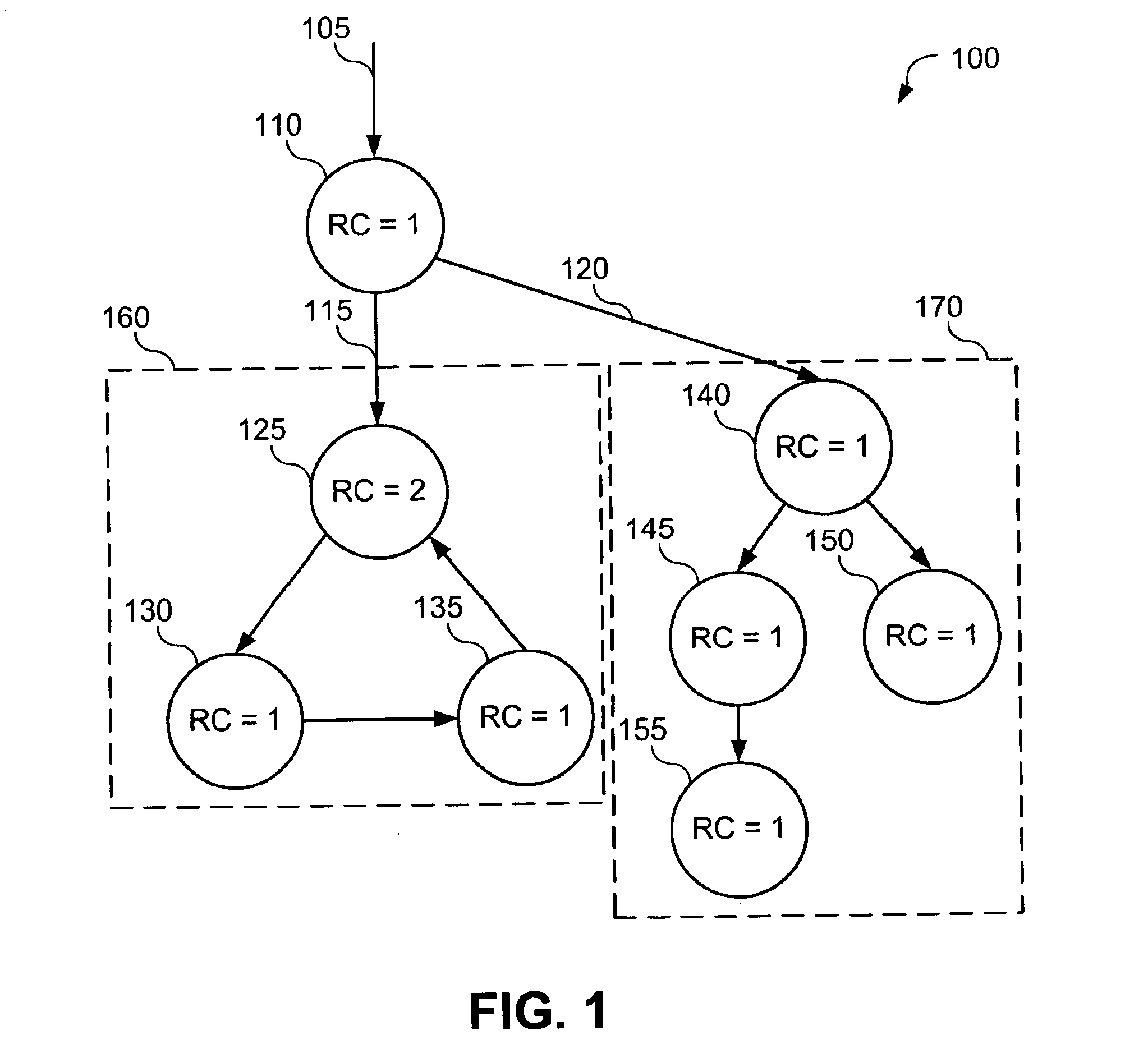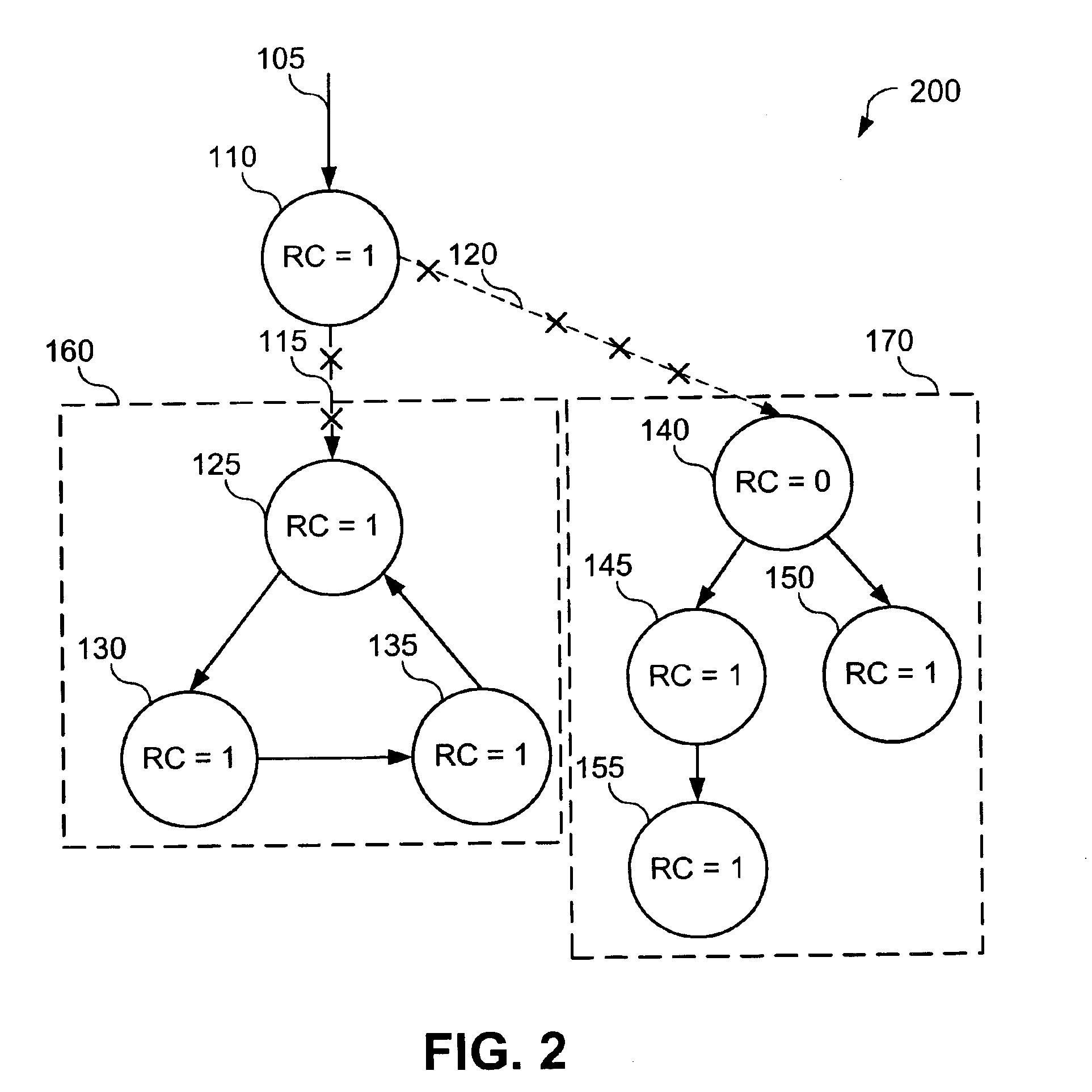Synchronous collection of cyclic garbage in reference counting systems
- Summary
- Abstract
- Description
- Claims
- Application Information
AI Technical Summary
Benefits of technology
Problems solved by technology
Method used
Image
Examples
Embodiment Construction
The present invention relates to garbage collection in computer systems using reference counting techniques. For those individuals who are not generally familiar with reference counting, the following section below presents many of the basic concepts and terminology that will help in understanding the invention. Importantly, this section also explains a significant weakness in current reference counting techniques.
Reference Counting Concepts and Terminology
Prior to discussing reference counting techniques, it is worthwhile to discuss some conventions used in this specification. The terms “node” and “object” are considered interchangeable, as are “edge” and “reference,” and “graph” and “object diagram.” An edge connects one node to itself or to another node in a graph, while a reference connects one object to itself or another object in an object diagram. Graph theorists tend to use the former terms, while software engineers tend to use the latter terms. Additionally, the term “cycle...
PUM
 Login to View More
Login to View More Abstract
Description
Claims
Application Information
 Login to View More
Login to View More - R&D
- Intellectual Property
- Life Sciences
- Materials
- Tech Scout
- Unparalleled Data Quality
- Higher Quality Content
- 60% Fewer Hallucinations
Browse by: Latest US Patents, China's latest patents, Technical Efficacy Thesaurus, Application Domain, Technology Topic, Popular Technical Reports.
© 2025 PatSnap. All rights reserved.Legal|Privacy policy|Modern Slavery Act Transparency Statement|Sitemap|About US| Contact US: help@patsnap.com



